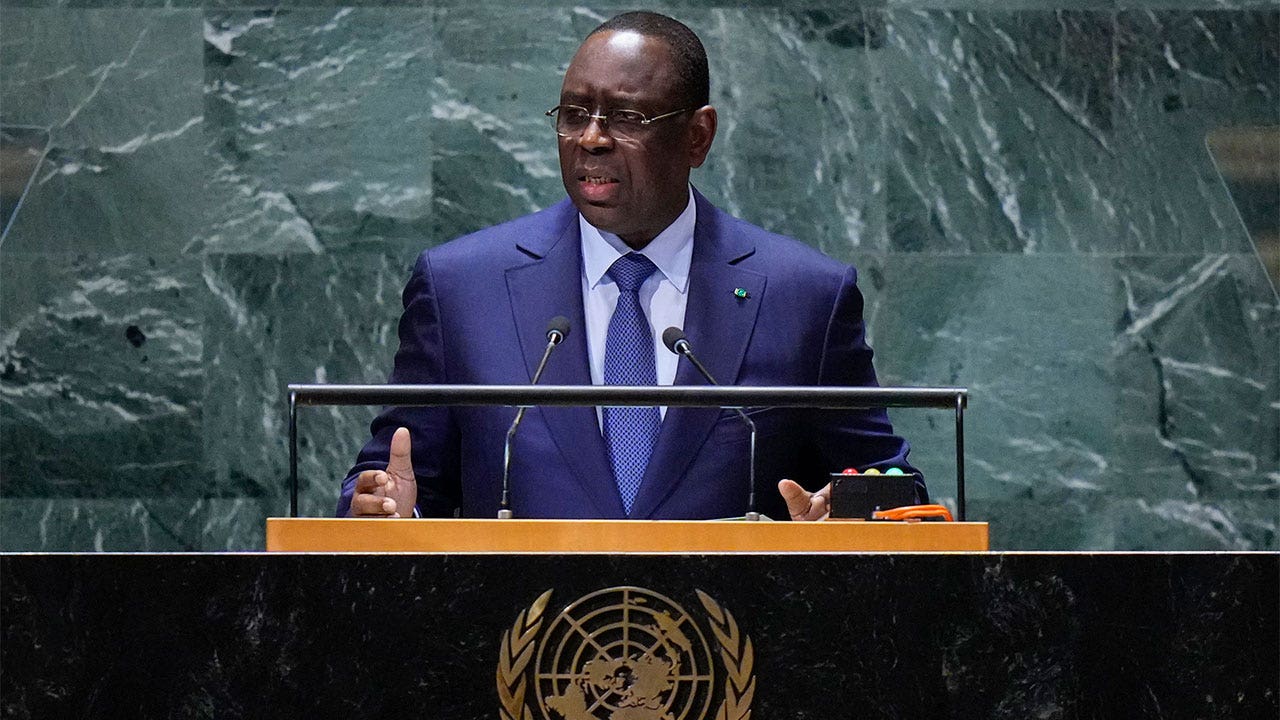China has sent dozens of coast guard and maritime militia vessels toward a disputed atoll in the South China Sea, a large show of force aimed at blocking a civilian protest flotilla from the Philippines, as tensions between the countries have flared.
The Filipino group organizing the flotilla of about 100 small fishing boats, led by five slightly bigger ones, said it wanted to assert the Philippines’ claims to Scarborough Shoal, an atoll controlled by Beijing that is closer to Manila.
But even before the motley Philippine fleet set out on Wednesday morning, China deployed a formidable contingent of much bigger government-run ships to the area, an intimidating escalation of its frequent assertions of control over vast expanses of sea far from its mainland.
“What we’re seeing this time, I would say, is definitely of another order,” said Ray Powell, the director of SeaLight, a group that monitors the South China Sea. “I think that the China Coast Guard is concerned that they’re going to try to sort of get too close and so they’re sending an overwhelming force.”
Standoffs and close brushes between Filipino coast guard or civilian vessels and China’s larger coast guard and militia ships — which have used powerful water cannons to drive Philippine vessels away — have become more frequent in the past two years. This time, the size of the Chinese presence and the large number of civilian Filipino boats could make any encounter near the shoal more risky, Mr. Powell said.
“If China decides that they want to send the message that says, ‘We’ve had enough of this,’ then the scary thing you would not want to see is one of these small Filipino fishing boats hit by a water cannon, because that would not end well,” he said.
Rafaela David, one of the leaders of Atin Ito, the Filipino organization coordinating the protest at sea, said the group would not be deterred from trying to reach the atoll, which the Philippines calls Panatag Shoal. The fishing boats were expected to take about 20 hours to get there.
“We should normalize and regularize civilian access,” Ms. David said at a news briefing on Tuesday in Botolan, a town on the Philippines’ main island of Luzon. She said the number of protest boats would show that Filipinos are “not intimidated by someone as big as China.”
The group’s chances of breaking China’s hold on Scarborough Shoal, about 138 miles west of Luzon, seem slim.
By Tuesday, China had positioned five coast guard ships and six maritime militia vessels near the shoal and had another 25 or so maritime militia vessels sitting roughly 60 miles further out, said Mr. Powell, whose group is part of the Gordian Knot Center for National Security Innovation at Stanford University. That estimate, he added, did not include Chinese vessels that either do not carry automatic identification signal devices, which allow them to be tracked, or have turned off their devices in order to “go dark.”
Officials with the Philippine Navy and coast guard said they were deploying ships to escort the civilian Philippine flotilla.
Relations between Manila and Beijing have worsened in the past two years over their maritime disputes.
Since Ferdinand Marcos Jr. was elected president of the Philippines in 2022, he has revived ties with the United States and pushed back against China’s claims to shoals and outcrops near the Philippines. Beijing, in turn, has stepped up coast guard and maritime militia operations to guard its claims.
On Monday, China’s coast guard said that it had started sea rescue training near Scarborough Shoal, which Beijing calls Huangyan Island, “to ensure the safety of people onboard vessels that are coming and going.”
Manila has also accused Beijing of taking steps to turn another disputed atoll, Sabina Shoal, which sits about 83 miles northwest of the Philippine island of Palawan, into an artificial island, and it sent a coast guard and a navy ship to the area. On Monday, Beijing rejected the accusation.
“The Philippines has repeatedly spread rumors, deliberately vilified China and tried to mislead the international community,” Wang Wenbin, a spokesman for the Chinese Ministry of Foreign Affairs, said at a regular news briefing in Beijing. “None of those attempts will succeed.”
The Scarborough Shoal has been under Chinese control since 2012, when Beijing wrested it from Manila in a weekslong standoff. Filipino fishermen had long worked in the resource-rich shoal, but since then their access has been restricted and sporadic.
In 2016, an international tribunal established under the United Nations Convention on the Law of the Sea rejected China’s expansive claims in the South China Sea and ruled that the shoal is a traditional fishing ground for the Philippines, China and Vietnam. China has ignored that ruling and continued to entrench its control across much of the sea, including Scarborough Shoal.
Atin Ito, the group organizing the Philippine flotilla, is a coalition of religious activists, civic groups and organizations representing fishermen. The name means “This Is Ours,” and the group has sought to galvanize the public behind peacefully asserting the Philippines’ claims in what Manila calls the West Philippine Sea.
Atin Ito held a similar protest last year, sending boats to the Second Thomas Shoal — a disputed atoll, also known as Ayungin Shoal, that is held by Filipino navy personnel on a grounded ship. But those boats turned back after constant shadowing by Chinese vessels, which have used water cannons against Philippine ships that have tried to deliver supplies to the grounded ship.
This time, the Atin Ito mission appears larger and may be bolder. The group said it plans to drop off food and fuel for any Filipino fishing boats in the area. Along the way, the flotilla also began dropping buoys bearing the message “WPS, Atin Ito” — that is, the West Philippine Sea is ours.






